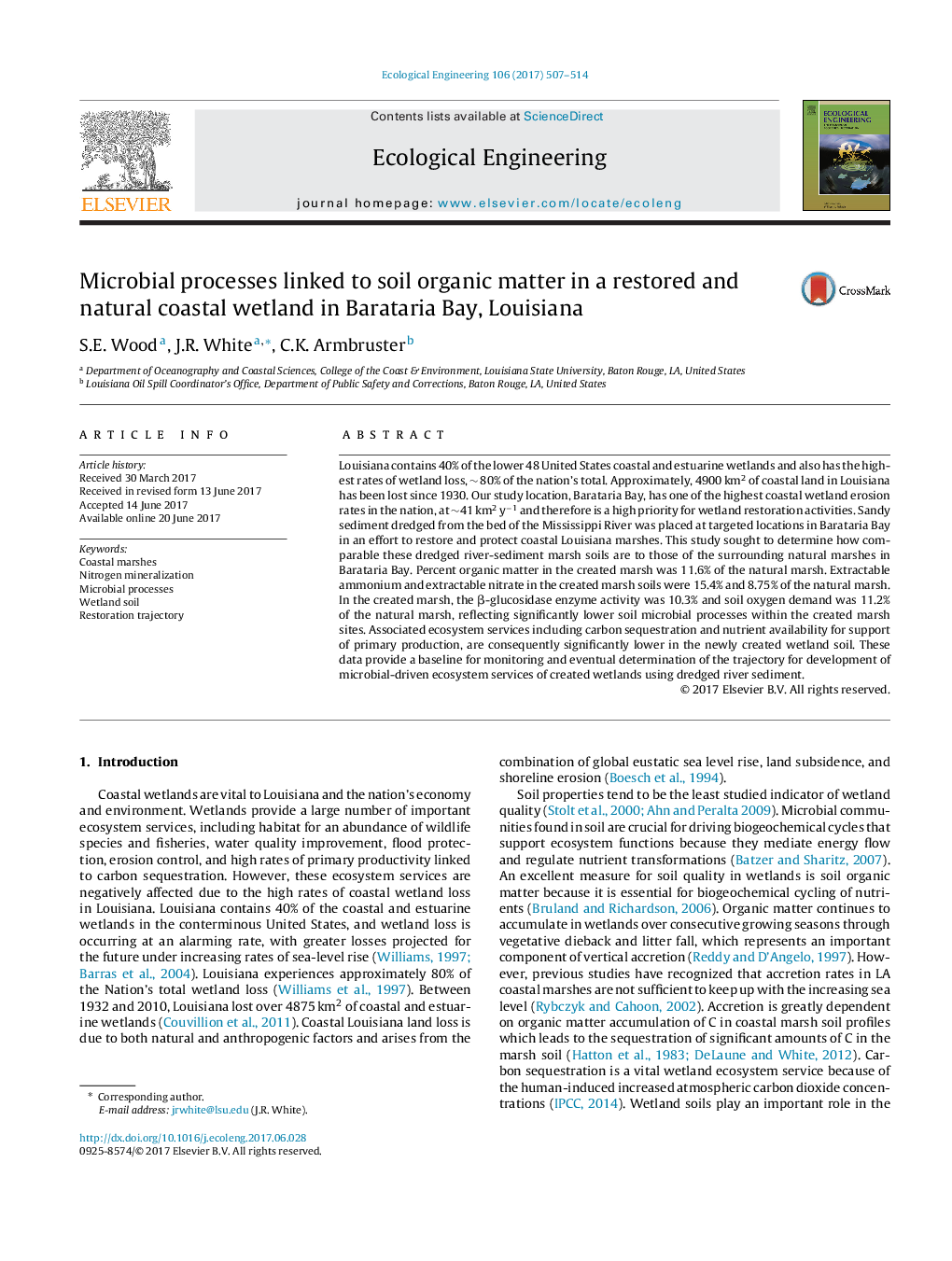| کد مقاله | کد نشریه | سال انتشار | مقاله انگلیسی | نسخه تمام متن |
|---|---|---|---|---|
| 5743868 | 1412322 | 2017 | 8 صفحه PDF | دانلود رایگان |

Louisiana contains 40% of the lower 48 United States coastal and estuarine wetlands and also has the highest rates of wetland loss, â¼Â 80% of the nation's total. Approximately, 4900 km2 of coastal land in Louisiana has been lost since 1930. Our study location, Barataria Bay, has one of the highest coastal wetland erosion rates in the nation, at â¼41 km2 yâ1 and therefore is a high priority for wetland restoration activities. Sandy sediment dredged from the bed of the Mississippi River was placed at targeted locations in Barataria Bay in an effort to restore and protect coastal Louisiana marshes. This study sought to determine how comparable these dredged river-sediment marsh soils are to those of the surrounding natural marshes in Barataria Bay. Percent organic matter in the created marsh was 11.6% of the natural marsh. Extractable ammonium and extractable nitrate in the created marsh soils were 15.4% and 8.75% of the natural marsh. In the created marsh, the β-glucosidase enzyme activity was 10.3% and soil oxygen demand was 11.2% of the natural marsh, reflecting significantly lower soil microbial processes within the created marsh sites. Associated ecosystem services including carbon sequestration and nutrient availability for support of primary production, are consequently significantly lower in the newly created wetland soil. These data provide a baseline for monitoring and eventual determination of the trajectory for development of microbial-driven ecosystem services of created wetlands using dredged river sediment.
Journal: Ecological Engineering - Volume 106, Part A, September 2017, Pages 507-514